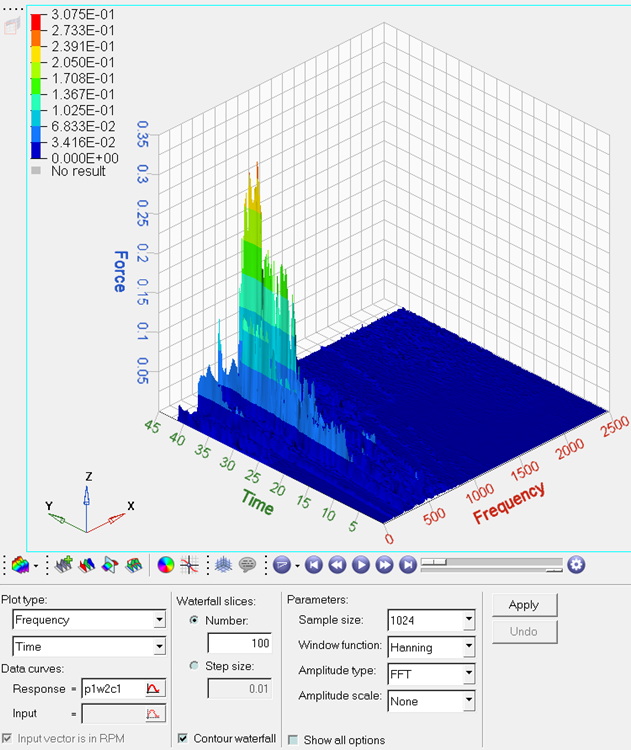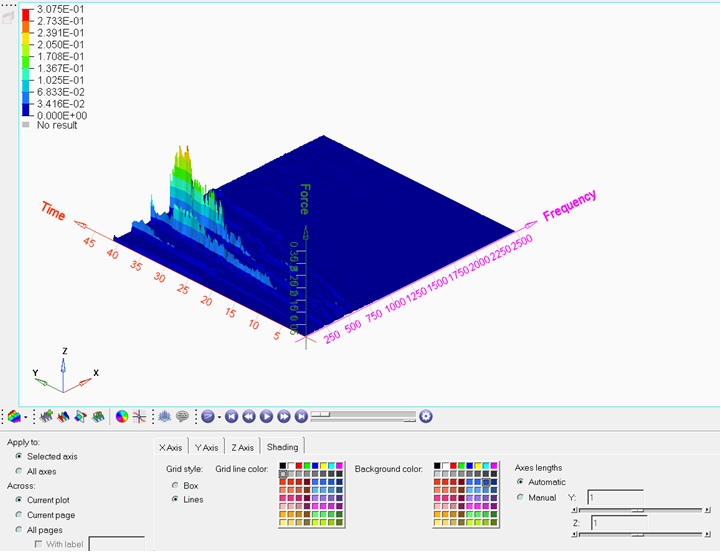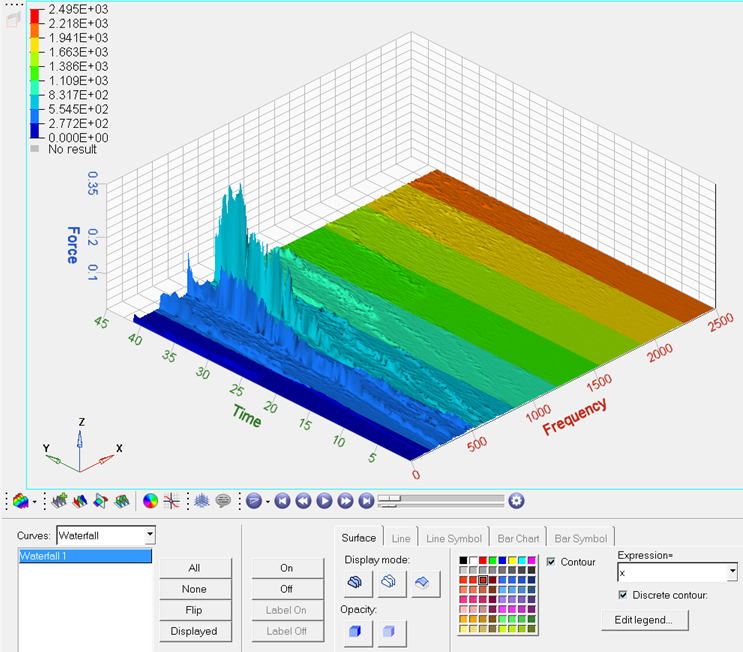HG3D-1010: Edit Waterfall Plots
In this tutorial, you will learn how to work with the Axes panel, query data, edit curve attributes, and use the Edit Legend dialog.
- From the toolbar, click the Curve Attributes icon,

- From the menu bar, select
Plot attributes, such as style, color, and weight are located in the Curve Attributes panel. This panel also allows you to contour the surface and edit the legend, too.
- From the toolbar, click the Coordinate Info icon,

- From the menu bar, select
The Coordinate Info panel allows you to retrieve individual point data on any curve in the active window. When a point on a curve is selected, the point data is displayed on the panel and in a bubble in the graphics area of the screen.
- From the toolbar, click the Axes icon,

- From the menu bar, select
Axis attributes such as labels, color, and scaling can also be modified using the Axes panel
Open Session File trimmer.mvw and Create HyperGraph 3D Window
- From the menu bar, select .
- Select the file trimmer.mvw, located in the 3dplotting folder, and click Open.
- Click Close on the message log that appears.
-
Click on the Add Page icon,
 , to add a page.
, to add a page.
- From the Select application menu, select HyperGraph 3D.
Create a Frequency versus Time Waterfall Plot
Work with the Axes Panel
Query XYZ Values Using the Coordinate Info Panel
Edit the Curve Attributes and Contour the Plot
Use the Edit Legend Dialog
- Click Edit legend.
-
Experiment with the following:
- Click on a number in the legend box and enter a new value.
- Press Enter.
- The edited value is displayed in bold font. The remaining values linearly interpolate.
-
Add a header and footer to the legend.
- Activate the Header check box and enter text in the text box.
-
Click the font button
 and change the font type and size.
and change the font type and size.
- Click OK.
- Activate the Footer check box and enter text in the text box.
-
Click the font button
 and change the font type and size.
and change the font type and size.
- Click OK.
- Click Apply.
-
Change the color of a legend band.
- Click on a color band.
- Select a new color.
- Click OK.
- Change another color.
-
Interpolate colors between two color bands.
- Click Interpolate.
- Click on the first changed color.
- Click on a second changed color.
- The colors between the two selected colors are interpolated.
- Click Apply.
Save Legend Settings for Future Use
Once you have completed your legend settings, you can save them for future use. Items that can be saved are listed in the Save options section.
 in the Response field for Data curves:.
in the Response field for Data curves:.
 .
.


 .
.
 .
. from the Display mode options in the panel.
from the Display mode options in the panel. .
.